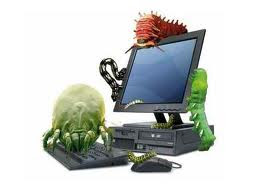
If third parties have hacked into your computer and you want to get rid of these intruders, then you need an answer to the question of how to get rid of trojan virus threats. In order to get rid of trojan virus threats, you need the right kind of software product.
Trojans are pretty simple to explain. They are a type of malware (also called spyware) that can monitor you and your computer activities. Trojans come in a number of different forms. Some are just annoying, while others are downright dangerous. Some trojans put strange icons on your desktop, and place pop-up ads on your computer. A more serious type of trojan will remove the startup button on Windows. The most serious types of trojans attempt to access information that no one would want to get out. Things like credit and banking information. Trojans are often placed on a user's computer when they download free programs and files. Ironically enough, a lot of programs you can download for free to get rid of trjoans actually contain trojans in them!
Ok, so now that you know exactly what a trojan is, it is time to answer the question of how to get rid of trojan virus threats. You want to use a trojan remover with a large database of all the threats that are out there, that can be updated on a regular basis. In addition, look for products that can be used to fight off future trojan attacks, as well as those with the ability to schedule future trojan scans ahead of time.
Article Source: http://goo.gl/8fEkS



